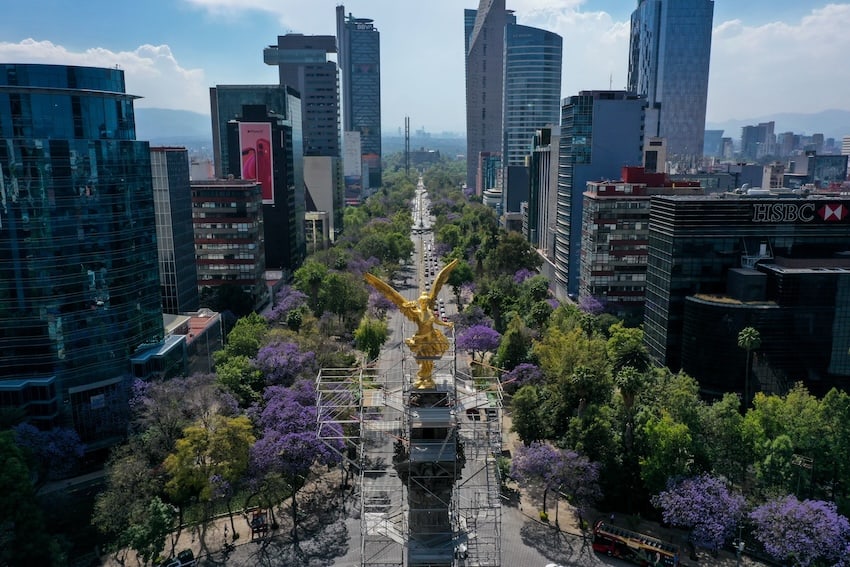Residents of Mexico City have expressed concern as jacaranda trees have begun to bloom earlier than usual this year, with the first purple flowers appearing as early as January.
Typically, the appearance of jacaranda flowers heralds the arrival of spring in Mexico’s capital, which has left some wondering if climate change has caused spring to arrive early.

“The jacaranda usually begins to flower in late March, during the spring season, yet it is currently blooming earlier than expected, with flowers appearing in January and February,” Constantino González, a researcher at the Institute of Atmospheric Sciences and Climate Change of the National Autonomous University of Mexico (UNAM), told newspaper La Jornada.
He further suggested that winter weather in the capital ended in mid-January.
Earlier this month, the National Meteorological Service (SMN) warned that 2024 is expected to be hotter than 2023 with temperatures potentially exceeding 40 degrees Celsius in certain areas. The change in weather patterns is influenced by El Niño, a natural phenomenon that causes higher-than-average sea surface temperatures in the tropical Pacific region.
The SMN also forecast there will be four heat waves before July, with the first arriving as early as next month.
However, some experts have taken to social media to point out that early blooming of jacarandas is no reason to panic.
“The use of photos and videos from previous years to depict the premature flowering of jacarandas is talked about irresponsibly,” wrote Arboles CDMX forestry and environmental engineers on the X social media platform.
“Yes, there have been alterations in flowering, but they have not bloomed two months earlier, as some news stories say, and the early bloom hasn’t been drastic, in fact it’s been gradually happening for years, ” they further explained.
According to National Geographic, flowers that bloom too early risk not being pollinated by hummingbirds or bees, resulting in less nectar and fertilization, which can lead to fewer seeds and fruits.

This “early spring” phenomenon has also been observed in regions of Asia and Europe.
“The issue happens when early springs don’t just become the exception, but the rule,” Ornithologist Morgan Tingley from the University of California explained to Scientific American. “And that’s what we are seeing with climate change in general.”
To research whether climate change is causing an early bloom of jacarandas, González is leading a team of scientists to collect samples of jacarandas in the city and compare the data obtained from year to year.
Jacarandas are originally from South America, and were brought to Mexico by Japanese immigrant Tatsugoro Matsumoto in the 1930s. Due to the vibrant purple color of its flowers, they have become ornamental trees across Mexico City and other parts of the country.
With reports from National Geographic, Animal Político, Forbes México and La Jornada
